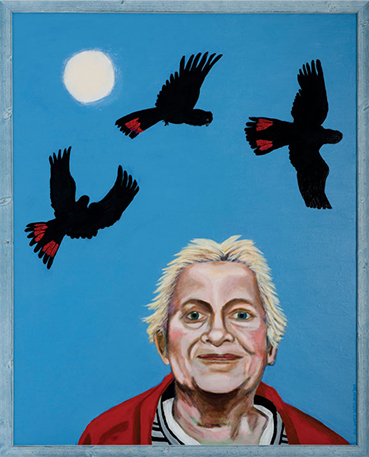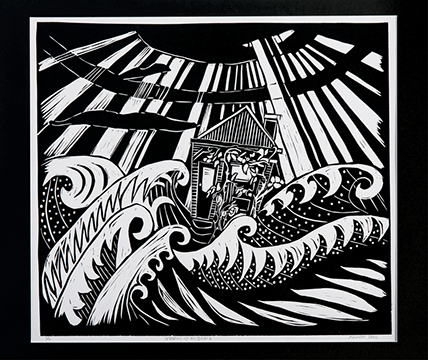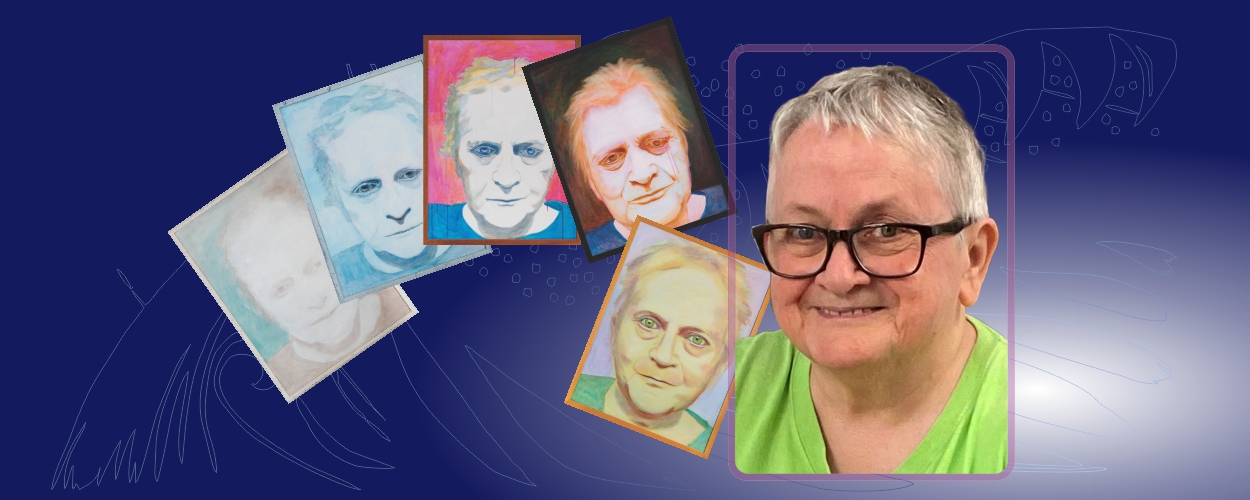Maureen Cook went from worrying about how long she had to live to planning for a whole new life. It only took her 23 years.
“I found out I had hepatitis C in 2000 when a diligent and insightful GP decided to test me for it after she discovered I had hepatitis B back in 1975. I’d cleared the hep B then and didn’t think about it anymore. Didn’t know I had hep C,” she recalled.
“Well, when I got my hep C diagnosis, I started worrying about how long I would live for, and worried about passing the virus to other people. I’d look at pictures of the virus and thought it looked really scary.”
Because there was no effective cure back then, Maureen looked into, and tried complementary therapies. “I tried acupuncture, herbal remedies… with no results,” she recounted. Then, in 2009 because she had liver cirrhosis, Maureen was put on Pegasus.
“That went horribly wrong – I almost died.”
She kept a visual diary during the first treatment but had to stop because she became too ill. She had ended up in intensive care for nine days with double pneumonia and septicemia. “My bone marrow had stopped producing the vital blood cells to fight the good fight for me. Remarkably I survived, after I was not expected to,” she said.

“I had to go to St Margaret’s hospital to learn to walk again. My memory and comprehension was really bad.”
In 2011, she began a series of five self-portraits documenting her difficult journey to recovery. She named the series Waking the Dead. In her artist statement for an exhibition where her this series was presented, she said: ‘Waking the Dead 1-5′ documents my struggle to be present in the world as my consciousness dragged itself to the surface … I had to relearn thinking, comprehending, remembering, doing and to be able to stand up and walk again.
“I was attending an art group in Stepney, learning painting. The artwork was my way of processing all that,” she explained. “The series of five portraits was me coming back to life. It was almost like a spiritual experience.”
In 2015 she had a call from the Flinders Medical Centre offering her to be part of a trial of new direct acting antiviral drugs.
“The new treatment was different. The only side effect I had was insomnia. My asthma played up a bit, but it was manageable. I was able to continue to go to work.”
Life post-cure was… a tremendous relief. It was wonderful knowing that I’m no longer infectious, able to pass the virus on to others.
For Maureen, the difference in life pre and post cure didn’t relate much to how other people treated her, but more to how she felt about herself.
“I had internalised my stigma because I felt I was stupid … blaming myself. I thought, being a nurse, I should have taken more care. Now I’m cured, I don’t feel that self-blame anymore. I can put it all behind me.
“I hadn’t encountered much stigma overtly, from others. Mostly support in fact. I discussed my hep C with friends and family when I was first diagnosed. They only gave me support.
“Initially I chose not to disclose to my workplace that I had hep C. However, the Pegasus treatment went for 48 weeks which meant I had to take a year’s leave without pay due to the severity of the side effects.
“Even though the first treatment went horribly wrong, and I ended up in hospital for 10 weeks, the time off work and recovery really helped with my burn-out from work.
“After the horror of my first treatment, I had decided to take a positive attitude and accept that I had to learn to live with this chronic disease.”

“Life post-cure was… a tremendous relief. It was wonderful knowing that I’m no longer infectious, and not able to pass the virus on to others.”
A nurse for 47 years, 38 of them in mental health, Maureen continued working after clearing hepatitis C, until the COVID-19 pandemic hit.
“I took a couple of weeks off, and kept on taking more,” she said with a laugh. “That’s when I retired from nursing – in July 2020.”
After a three-year hiatus, unwinding and reviewing her new life, she’s ready to get back into work – not as a nurse but in other areas that draw on her lived experience and her relationship with art.
I was trained in acceptance and commitment therapy, and used that to give people skills to managing their own emotions and life challenges. Art was part of it…
“As a mental health nurse, I worked in many areas and in my last ten years, I was part of a SA Health community psycho-social rehabilitation team. We provided group programs on living skills, psycho-education, healthy living, fitness, recreation, youth programs, art, liaising with further education and community centres and many more activities. We also worked with the inpatient unit Cramond Clinic and an NGO return to work program.
“I was trained in acceptance and commitment therapy, and I used that to teach people skills to manage their own emotions and life challenges. Art was an important part of rehab as a way of looking at the world, identities, and so on. The people I really enjoyed working with were the carers.
“Art is a good way to help people process their experiences and emotions and being with yourself. A way to engage with people. A very good mindful exercise.”
In the three-year break, Maureen reviewed the paintings that she had done on her journey, and decided to set up a studio so she could paint more and run workshops from it.
She believes art is for everyone, not only those who are “artistic” in the conventional sense. “It can work for people who may not be usually interested in art,” she explained. “Like creating mandalas, for instance… it’s a way to engage with people, get people motivated. It can also be an outlet.”

Maureen said looking at her artwork brought back difficult memories but also gave her direction for the next chapter of her life.
“Emotionally it was a really difficult time. Hep C was such a big part of my life for so long. and I didn’t know for so long that I had it. Having access to the new treatment was really life-changing for me and clearing the virus was one of the best things that happened to me.
“When I look at the artwork it brings it all back and gives me a stronger resolve to make a contribution with my life.”
View more of Maureen’s artwork here.

What a great article. Absolutely wonderful art works. Thanks
Thank you. I agree. The art is powerful and evocative. Please share with your networks. 🙂